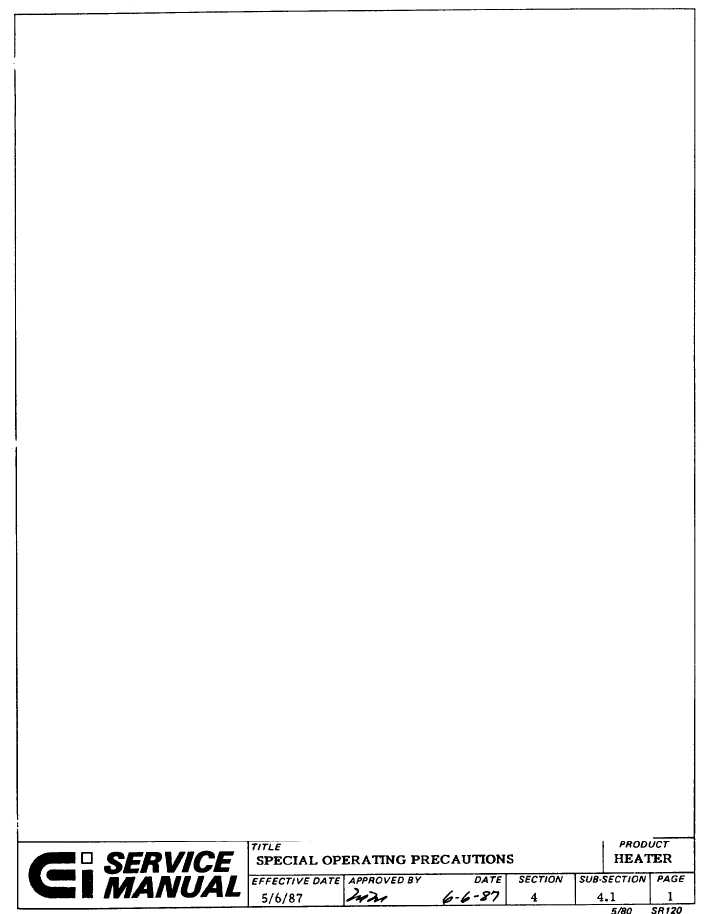TM 5-3895-374-24-2
SPECIAL OPERATING PRECAUTIONS
CAUTION 1: BY-PASS VALVE
A by-pass valve is provided to allow circulation through the heater and heat
exchanger and prevent damage to the heater, when the burner is operated with
external valves closed. The by-pass system is controlled by the valve under the
heat exchanger (stack end). Be sure this valve is open when operating.
CAUTION 2: WATER IN OIL SYSTEM
Upon initial start-up or after the heater has been idle during the winter season, the
following precautions should be taken to prevent the generation of steam from any
water or condensation in the hot oil system. The heater temperature control
should be set at 205F. The heater should be operated at this temperature for at
least three hours. If the circulating pump pressure remains steady at 15 psi. or
higher, then the temperature may be increased 5F at a time, allowing ample time
for the entire system to rise to this higher temperature, with a steady pump
pressure before going to the next higher temperature. If steam should be
generated in the system, indicated by abrupt wide fluctuations or a zero pump
pressure and/or a rumbling noise in the heater, stop the burner immediately. Allow
enough time for the system to stabilize and the circulating pump pressure to
become steady. Removal of the moisture in the complete oil system is time
consuming and may require a full day to be done properly and safely, but it is
important because steam may cause severe damage to equipment. Note the pump
pressure switch will shut off burner any time the pump pressure drops below 10
psi.
CAUTION 3: HOT WET WELLS
The temperature control thermocouple, high limit switch, pump pressure switch,
and thermometers are immersed in the heat transfer fluid. Do not attempt to
remove these components when the heater is hot without first draining the hot oil
below the level of component to be removed.
CAUTION 4: BURNER FUEL PUMP
On combination gas/oil burners, be sure there is fuel oil supplied to the fuel pump
even when the burner is operating on gas. This is because the pump depends on
an adequate fuel oil supply for lubrication.
The pump may be disconnected for extended periods of gas firing to reduce pump
wear, or to operate the burner when no oil is available to circulate through the
pump for proper lubrication. Also in case of pump malfunction, or failure, the
coupling should be disconnected for continued operation of the burner on gas.
The fuel pump must be removed on the side of the burner housing to gain access
to the pump coupling. The fuel lines must first be disconnected from the fuel
pump. Next, the fuel pump mounting bolts must be removed so that the fuel pump
may be taken out of the burner housing. The pump coupling is a hardened rubber
type with female splines on both ends. The coupling can be removed after the
pump is removed from the housing by pulling it off the male splines at both the
blower motor and pump shaft ends.
(page 3 - 939)

